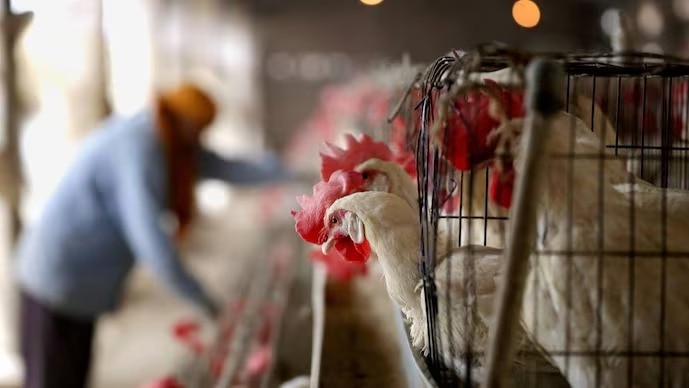2024-04-18 17:06:46
The World Health Organisation has raised concerns about the spread of H5N1 bird flu to humans. The global health organisation flagged that the bird flu has an “extraordinarily high” mortality rate in humans.
Since its emergence in 2020, the virus has led to massive poultry deaths, reaching tens of millions. Recent reports indicate the virus has spread to various mammal species, including domestic cattle in the US, heightening the potential for human transmission.
Jeremy Farrar, the chief scientist at the WHO, sounded the alarm over the bird flu cases spreading to humans at a press conference in Geneva.
Farrar labelled the A(H5N1) variant as a “global zoonotic animal pandemic.”
He said, “The great concern of course is that in… infecting ducks and chickens and then increasingly mammals, that virus now evolves and develops the ability to infect humans and then critically the ability to go from human to human.”
In a surprising turn, cows and goats were found susceptible to the virus last month, with a person in Texas reportedly recovering from bird flu after contact with dairy cattle. Additionally, 16 herds across six states were infected, likely due to contact with wild birds.
While human-to-human transmission hasn’t been confirmed yet, the mortality rate among those infected through animal contact has been alarmingly high due to the lack of natural immunity.
From the start of 2023 to April 1 this year, the WHO said it had recorded 463 deaths from 889 human cases across 23 countries, putting the case fatality rate at 52 per cent.
The recent case of a man contracting bird flu in Texas highlights the escalating risk of the virus moving closer to humans. Farrar warned that “this virus is just looking for new, novel hosts”.
He stressed the importance of increased surveillance to track human infections and virus adaptations. He pointed out that if the virus starts spreading among humans, it could create a vicious cycle.
The WHO scientist said that efforts are underway to develop vaccines and treatments for H5N1. Farrar emphasised the need to strengthen the diagnostic capabilities of health authorities globally. He called for equitable access to vaccines, treatments, and diagnostic tools to ensure a swift response should human-to-human transmission occur.
(With inputs from news agency AFP)
bird flu, bird flu cases humans, humans getting bird flu, who on bird flu cases, bird flu cases india, bird flu cases india, can bird flu spread to humans
Source link
4 total views , 1 views today
